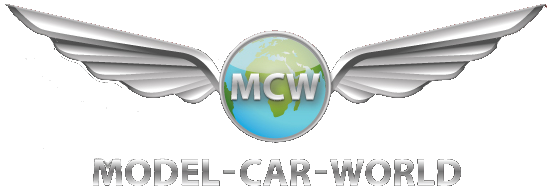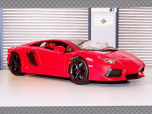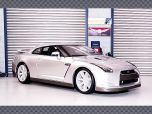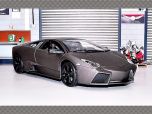Why is it Called Die Cast Metal?
Why is it Called Die Cast Metal?
Die casting is a manufacturing process that has become synonymous with precision and quality, particularly in the production of diecast model cars. But have you ever wondered why it’s called "die cast metal"? In this blog post, we will explore the origins of the term, how the die casting process works, and its significance in creating high-quality diecast model cars.
The Origins of Die Casting
The term "die casting" has its roots in the word "die," which refers to a mould used to shape materials. The process itself dates back to the 19th century when it was first employed for producing metal components for various applications. The technique allows manufacturers to create complex shapes with high accuracy and minimal waste.
In essence, die casting involves forcing molten metal into a mould under high pressure. Once cooled, the metal solidifies into the shape of the die. This method is particularly advantageous for producing intricate designs and detailed features, making it ideal for crafting diecast model cars.
Understanding Die Casting
To fully appreciate why it's called die cast metal, it's essential to understand how the process works. Here’s a breakdown:
1. Preparation of Materials
The first step in die casting involves selecting suitable metals. Commonly used materials include aluminium, zinc, and magnesium due to their excellent fluidity and strength properties. These metals are melted down until they reach a liquid state.
2. Creation of Moulds (Dies)
The next step involves creating dies or moulds that define the shape of the final product. These dies are typically made from hardened steel or other durable materials to withstand repeated use during production runs.
3. Injection of Molten Metal
Once the dies are ready, molten metal is injected into them under high pressure using specialised machinery known as a die-casting machine. This pressure ensures that every detail of the mould is filled accurately.
4. Cooling and Ejection
After injection, the molten metal cools rapidly within the mould, solidifying into its final form. Once cooled sufficiently, the dies are opened, and the newly formed part is ejected from them.
5. Finishing Touches
Finally, any necessary finishing processes such as trimming excess material or surface treatments are applied to ensure that each piece meets quality standards before being assembled into products like diecast model cars.
Why Use Die Casting for Model Cars?
Diecasting has become an industry standard for producing model cars due to several key advantages:
Precision Engineering
One of the primary reasons manufacturers opt for die casting when creating diecast model cars is precision engineering. The ability to produce highly detailed components means that collectors can enjoy models that closely resemble their real-life counterparts.
Cost-Effectiveness
While initial costs may be higher due to tooling expenses for creating dies, mass production through die casting significantly reduces per-unit costs over time. This efficiency makes it feasible for companies to produce large quantities of affordable yet high-quality diecast model cars.
Strength and Durability
Die cast metals exhibit exceptional strength compared to other manufacturing methods like injection moulding or plastic fabrication. This durability ensures that collectors can enjoy their models without worrying about wear and tear over time.
The Popularity of Diecast Model Cars
Diecast model cars have gained immense popularity among collectors and enthusiasts alike due to their intricate details and realistic designs made possible through die casting techniques. Many brands have emerged over time—such as Hot Wheels, Matchbox, and Dinky Toys—each offering unique collections that appeal to different tastes within this vibrant hobby community.
Collectibility Factor
Collectors often seek out limited editions or rare models produced via diecasting because these pieces tend not only represent craftsmanship but also hold potential value appreciation over time—a compelling reason why many people invest in these miniature vehicles!
Customisation Opportunities
Another appealing aspect is customisation; many hobbyists enjoy modifying their existing collections by repainting or adding features onto their favourite models—activities made easier thanks largely due precision afforded by original manufacturing processes like those found in traditional “die cast” methods!
Conclusion: Embracing Die Cast Metal
In conclusion, understanding why it's called "die cast metal" provides insight into both its historical significance within manufacturing processes as well as its practical applications today—especially concerning beloved hobbies such as collecting exquisite diecast model cars! With precision engineering capabilities combined with cost-effectiveness leading towards enhanced durability—all contribute towards making this technique an invaluable asset across various industries including automotive replicas! So next time you admire your collection on display remember: each piece carries with it not just artistry but also centuries worth innovation behind every single detail crafted through skilled hands using age-old techniques perfected over generations!




